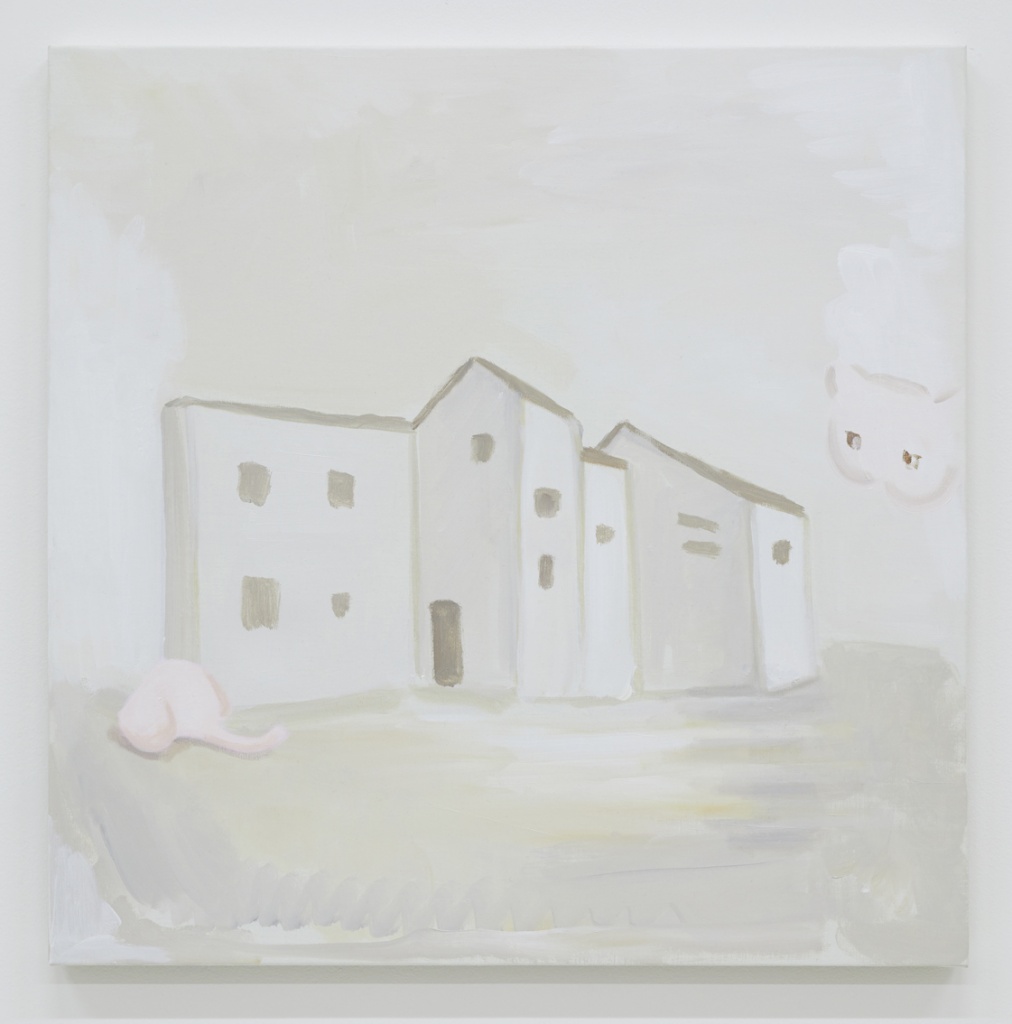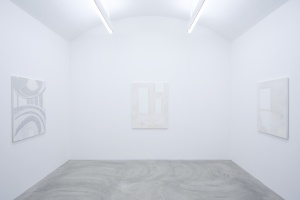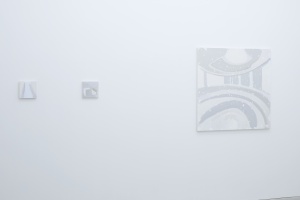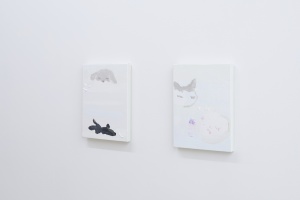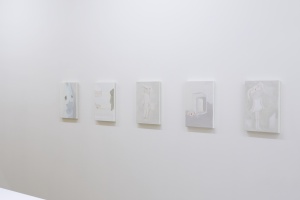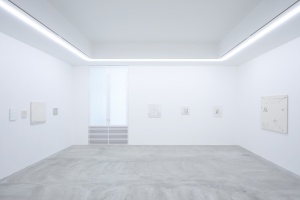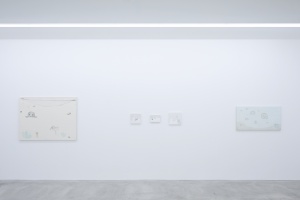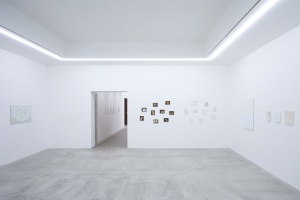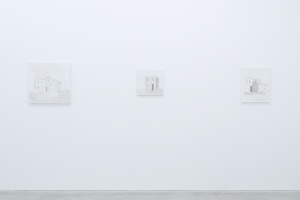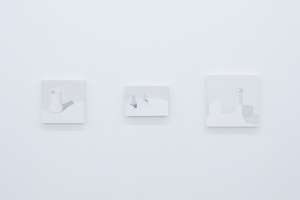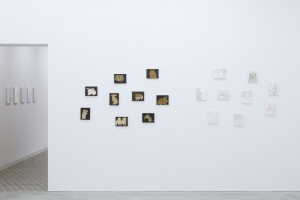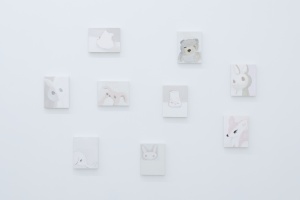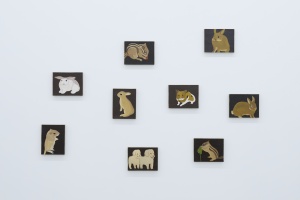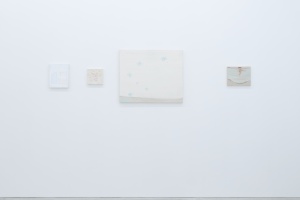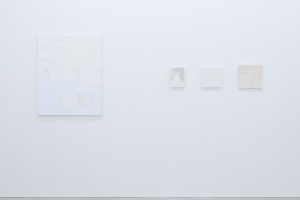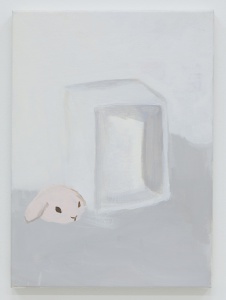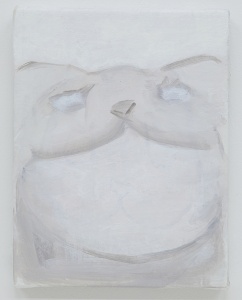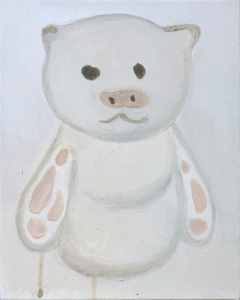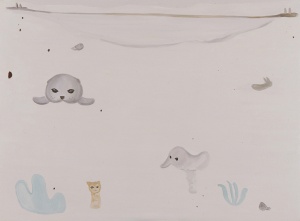Born in Tokyo in 1959, Masahiko Kuwahara started exhibiting his work in the 1980s. He has consistently expressed a sense of absurdity with regard to scenery and humanity being changed by modernization. Inorganic buildings and sceneries created by Japan’s economic prosperity during the 1960s and 70s, dolls and toys that were consumed and abandoned to anonymity, and uncanny creatures living by polluted water, are the primary scenery in which Kuwahara himself grew up. He depicts their sadness in light and humorous ways, assimilated with pale color tones and blurred outlines, suggesting our contemporary feelings of fleeting emptiness, dullness, and loneliness, yet also enabling us to sense a mysterious kind of happiness.
Kuwahara remarks on this exhibition:
When we were kids,
our grandfather took my brother and me goby fishing.
I wonder how old we were.
A small beach, surrounded by concrete.
On the sea surface oil glittered in rainbow colours.
Dark, pungent river.
Petrochemical products filling our house.
Ever more houses made with new building materials.
Problematic processed food.
The scenery I was in.
A part of myself.
Cleaning.
Erasure.
New packages.
Endless development and new products.
Gradually, the scenery becomes whiter and brighter,
Little by little, the apparent dirt gets clearer,
melting into dreams.
An unknown country,
Grandparents, father, mother, dogs and cats have already left this world.
The area where I live has changed over the past ten years or so.
A former factory site, its soil was decontaminated, and now it is a small town.
New streets and housing complexes, commercial facilities, hospitals and parks….
A clean town.
A white, bright town.
Products with cleansed origins,
And me, like them.
Walking in a quiet stage setting.
People, animals, food,
All seem very far.
I have forgotten where I am.
Art critic Midori Matsui analyzes the similarity of Kuwahara’s work with the Bad Painting that became popular in the United States in 1997-98.
…(Painters of Bad Paintings) thus succeeded in widening the range of contemporary painting by asserting “regional imagination” against the institution of modern painting, while releasing the historical as well as personal “shame” born of repression by strategically adopting the cheapest, most “anonymous” style of popular painting today. Although in a less flagrant way, Kuwahara’s own painting joins with their “aesthetics of the margin”.
(Midori Matsui, “The Unnameable Margin: Masahiko Kuwahara’s Serious ‘Bad Painting’”, exhibition catalogue for “View” at Tomio Koyama Gallery, 1999)
It was in 1995 at the Tokyo Pop exhibition that I first saw Kuwahara’s painting…his “negative pop” style conveyed the shame and sadness of marginal expression exiled from the glittery domain of “major” industrial commodities and Contemporary art, imprinting of “shame” or a minor “evil”.
Kuwahara’s work possesses an uncannily biomorphic feel, suggesting the interior of a body and brain set apart from the “landscape”…This may well be a representation of the physical perception of the subconscious that lies behind the rationally demarcated and explicitly explained “reality.”
(Midori Matsui, “Strange=Painting” STUDIO VOICE, August 1999)
This exhibition, “fantasy land”, is Kuwahara’s 10th solo exhibition since “Abandoned Child” in 1997 at Tomio Koyama Gallery, and will feature new and older works encompassing approximately 30 paintings. Kuwahara depicts in witty ways the oddness of the world that we usually overlook. Viewers are invited to see how he expresses desires in contemporary society in 2017.
—————————————————————————————–
For press inquiries, please contact:
press@tomiokoyamagallery.com (Makiko Okado)
—————————————————————————————–

